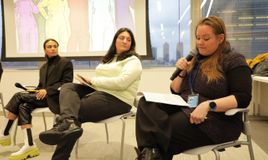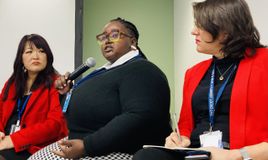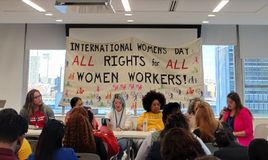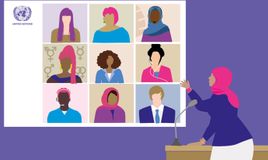Report debriefing CSW67

The Dutch debriefing on the 67th session of the UN Commission on the Status of Women (CSW67) took place on April 12th 2023 at the office of WO=MEN in The Hague. Participants from various civil society organisations and two ministries participated.
Read the report of debriefing CSW67 [PDF]
The meeting was opened by Nadia van der Linde (WO=MEN), who welcomed everyone and summarized this year’s CSW process. Paula Thijs (Atria) gave a presentation on the analysis of the CSW outcome document called the ‘Agreed Conclusions’. Member of the EU negotiation team Robin de Vogel (Permanent Representation of the Netherlands at the United Nations, New York) shared her views on the negotiations and looked ahead to the role of the Netherlands within the CSW process for the coming years. Delegation member Nils Mollema (Ministry of Foreign Affairs), for whom this was the first CSW, shared his experiences and discussed the implementation of the Agreed Conclusions by the Netherlands. Mariëlle Feenstra (75InQ) reflected on her role as CSW NGO representative and shared her insights as expert on the CSW priority theme. Finally, there was room for civil society participants to share their experiences, ask questions, and discuss follow-up actions.
Analysis Agreed Conclusions
The key points from Atria’s analysis of the Agreed Conclusions are listed below. This analysis compares the CSW outcome document with the Netherlands’ civil society priorities for the Agreed Conclusions and was presented as ‘gains’ and ‘losses’.
- The potential – and not just risks and challenges – of technology and innovation to improve women’s and girl’s lives is mentioned. There are references to the human rights of women and girls. Language on this almost doubled compared to last year’s text. It is very positive that gender bias in data, Artificial Intelligence and algorithms is recognized in the text. Also, the importance of gender statistics and analyses is addressed. The reference to ‘safety-by-design’ is a big win. This means that the impact on society and the environment is taken into account in the development of products and innovations. The Agreed Conclusions also stresses the inclusion of women and girls into innovation teams, and the promotion of participatory, gender-responsive approaches for technology design, development and deployment.
- Unfortunately, the link between technology, digital transformations and the climate crisis is weak. There are few references to the risks and impact of technology in addressing the climate crisis and climate justice.
• The importance of (digital) education throughout the life course, including older women, pregnant adolescents, young mothers, single mothers, and women and girls with disabilities is a win. Furthermore, there is a new paragraph on digital health technologies to ensure access to sexual and reproductive health-care services, including family planning, information and education. - However, no progress is made on Comprehensive Sexuality Education (CSE). This is unfortunate given this year’s priority theme and its focus on education. There are a lot of qualifiers in the paragraph on comprehensive education, i.e.: ‘where appropriate’, ‘age-appropriate’ and ‘relevant to cultural contexts’ which weaken its meaning.
- The paragraphs on gender-based violence (GBV) are quite strong. GBV is more frequently mentioned: 17 times vs 11 times last year, while the number of references to violence against women and girls stayed about the same. ‘Non-consensual’ was added to the paragraph on sharing sexual and explicit material, which is important since otherwise every nude photograph could be considered violence and exploitation. The right to privacy and personal data is mentioned. Lastly, new and emerging technologies that create new forms of violence, such as deep-fakes, are mentioned in the text, which is essential given the speed of technological developments.
- ‘Technology facilitated gender-based violence’ (TFGBV) did not make it into the text but was discussed at great length. Instead, ‘gender-based violence that occurs through or is amplified by technology’ or ‘gender-based violence through the use of ICT and social media’ is used. The continuum of violence (the link between offline and online violence) is mentioned but only once. The language on the accountability of social media platforms and big tech to prevent gender-based violence could be stronger.
- Another gain is that the root causes of the gender digital divide, such as negative social norms and stereotypes, are recognized. Also, the full engagement of men and boys in order to combat and eliminate stereotypes, sexism and negative social norms are mentioned in the text. Moreover, recognition for the full, equal and meaningful participation and leadership of women and adolescent girls in STEM (science, technology, engineering, and mathematics), ICT (information and communications technology) and R&D (research and development) sectors is a win.
- Unfortunately, no concrete actions, such as quotas, are suggested, nor are there any references to ILO convention 190 on the elimination of violence and harassment in the world of work.




